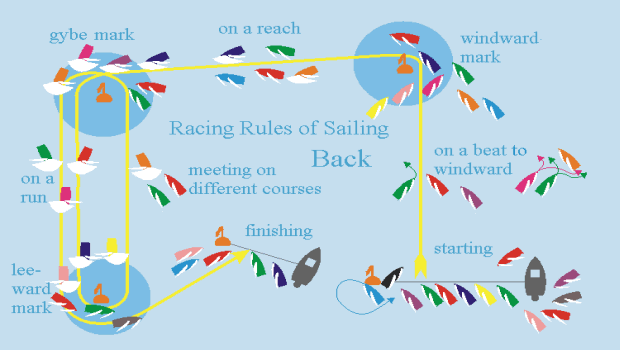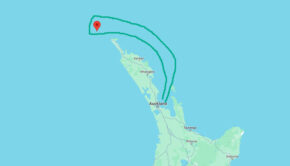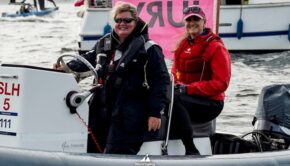Rule 24: Interfering with another Boat
Published on January 14th, 2014
The 2014 supplement to the ISAF 2013-2016 Case Book, which provides interpretations of the Racing Rules of Sailing, contains new cases that were approved at the ISAF Annual Conference in November 2013. Here is one of them…
Assumed Facts for Question 1
The course for a race begins with a windward leg to the windward mark, followed by a short reach to an offset mark and then a run to the leeward mark. Boats L and W sail the windward leg and round the windward mark and the offset mark. On the run, while L and W are on the same tack sailing towards the leeward mark, L luffs W, and W responds and keeps clear.
After the race, W learns that L had failed to start and has been scored OCS. W protests L alleging that L broke rule 24.2, which states that “Except when sailing her proper course, a boat shall not interfere with a boat taking a penalty or sailing on another leg.”
Question 1
For the purposes of rule 24.2, were L and W sailing on the same leg of the course or different legs when L luffed W?
Answer 1
For the purpose of determining whether rule 24.2 applies to an incident, a boat is sailing on the leg which is consistent with the course she is sailing before the incident and with her reasons for sailing that course. L had not started, but she was unaware that she had made that error. Therefore, L was sailing on the leg of the course to the leeward mark. Clearly W was on the same leg. Therefore, when L luffed W, rule 24.2 did not apply between them.
Assumed Facts for Question 2
The facts are the same as for Question 1, but with these differences: L started correctly, but she was unaware of the requirement to round the offset mark and she failed to round it on the required side. After rounding the windward mark she sailed towards the leeward mark until she luffed W.
Question 2
For the purposes of rule 24.2, were L and W sailing on the same leg of the course or different legs when L luffed W?
Answer 2
Clearly W was sailing on the leg to the leeward mark. Because L was unaware of the requirement to round the offset mark and had been sailing towards the leeward mark from the time she rounded the windward mark until she luffed W, L was also sailing on the leg to the leeward mark. Therefore, when L luffed W, rule 24.2 did not apply between them.
Assumed Facts for Question 3
The facts are the same as for Question 2, but with these differences: After L had sailed part of the way to the leeward mark, she realized that she had failed to round the offset mark and she turned back to correct her error. While L was beating to windward to the offset mark she encountered boat X. X had rounded the windward mark and the offset mark and was running towards the leeward mark on the same tack as L. L deviated from her proper course to the offset mark in order to luff X. X protested L alleging that L broke rule 24.2.
Question 3
For the purposes of rule 24.2, were L and X sailing on the same leg of the course or different legs when L luffed X?
Answer 3
Clearly X was sailing on the leg to the leeward mark. When L realized that she failed to round the offset mark and turned to sail towards the offset mark, she was no longer sailing on the leg to the leeward mark and had begun to sail on the leg from the windward mark to the offset mark. She was sailing on that leg when she encountered X. Therefore, the boats were sailing on different legs when L luffed X. Rule 24.2 did apply between L and X, and L broke it.









 We’ll keep your information safe.
We’ll keep your information safe.